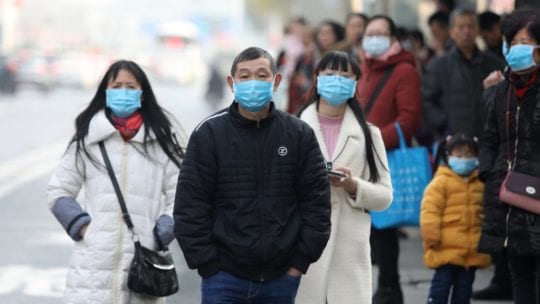
Though much press coverage concentrated on the death of George Floyd and related protests, WHO made pandemic news yesterday. In truth, WHO added confusion to an already unclear situation. Inexact word choice was the main issue.
At the pandemic's start, advice was simple. PR pros should send audiences to trusted sources of information, such as the CDC or the WHO. One would think those beacons of science would offer consistent, factual information.
It wasn’t long before that advice went awry. President Trump attacked the WHO, and political issues also took their toll on the CDC. Into the void, media tapped a slew of public health sources, offering a range of opinions. Wear masks, don’t wear them. Fly, don’t fly. Test or wait until you feel sick. A confused public remains caught in the middle.
A Rare Moment
On Monday the WHO's Maria Van Kerkhove, technical lead for the coronavirus, told a media briefing there’s little evidence that asymptomatic people—those who feel well and show no COVID-19 symptoms—can spread the novel coronavirus.
"It still seems to be rare that an asymptomatic person actually transmits onward," Van Kerkhove told media during a call, "Business Insider" reported. She based her statement on studies in countries that are conducting “very detailed contact tracing,"
This would mean that people exhibiting signs of the virus, such as coughing, breathing issues, weakness and fever, are potential spreaders. Those who seem fine are highly unlikely to spread the virus.
So, reopen your businesses and discard your masks. Only people who feel sick should don a mask. Those who feel well can gather in public venues, though they need to maintain physical distance.
Hold On
Problem solved. Ah, not so fast.
Social media exploded. Many public health officials, including some we see in the media, challenged the WHO’s findings.
For example, Harvard Global Health Institute director, Dr. Ashish Jha, on Twitter, wrote that some models say 40 to 60 percent of spread comes from people without obvious symptoms.
This from @WHO is getting a lot of attention and creating confusion.
I want to quickly share what I understand about this.
Bottom line question:
Are infected people without symptoms an important cause of spread?
My best guess: yes.
A thread https://t.co/NnLpf7kTVh
— Ashish K. Jha (@ashishkjha) June 8, 2020
The tumult was such that the WHO this morning came back to clarify its stance. Van Kerkhove explained that her basic statement stands, but with conditions. She said looking at a few studies, such transmission is “very rare.” But that’s just a few studies, not globally. (PR Takeaway: Anticipate questions your executive's statements will raise.)
In addition, she narrowed the definition of asymptomatic. Asymptomatic means a person who does not have symptoms “and does not go on to develop symptoms," she said. (PR Takeaway: Avoid lingo and explain all terms clearly.)
Mike Ryan, executive director of the WHO’s health emergencies team, added, “I'm absolutely convinced that [asymptomatic spread] is occurring. The question is how much."
More confusion: Who is truly asymptomatic? For example, a person begins the day feeling well. She goes outdoors and engages in public-facing activities. As the day wears on, she may start to feel unwell. At this point, she’s pre-symptomatic. Her ability to spread the virus is considered high.
My take on @WHO press conference on asymptomatic transmission - sounds like a misunderstanding. WHO is drawing a distinction between transmission from people who are fully asymptomatic (never develop symptoms) and pre-symptomatic (haven’t developed symptoms yet). 1/3
— Natalie E. Dean, PhD (@nataliexdean) June 8, 2020
Good news: The WHO believes distancing, hand washing and contact tracing can significantly slow the virus.
The bad news is that while WHO was mincing words, it also said Monday was the planet's worst day so far. More than 136,000 new cases were reported. Dr. Anthony Fauci today said the virus's spread is far from over. While much of US news coverage is elsewhere, the pandemic is getting worse.
Seth Arenstein is editor of PRNEWS. Follow him @skarenstein
This article is part of PRNEWS' ongoing COVID-19 coverage
